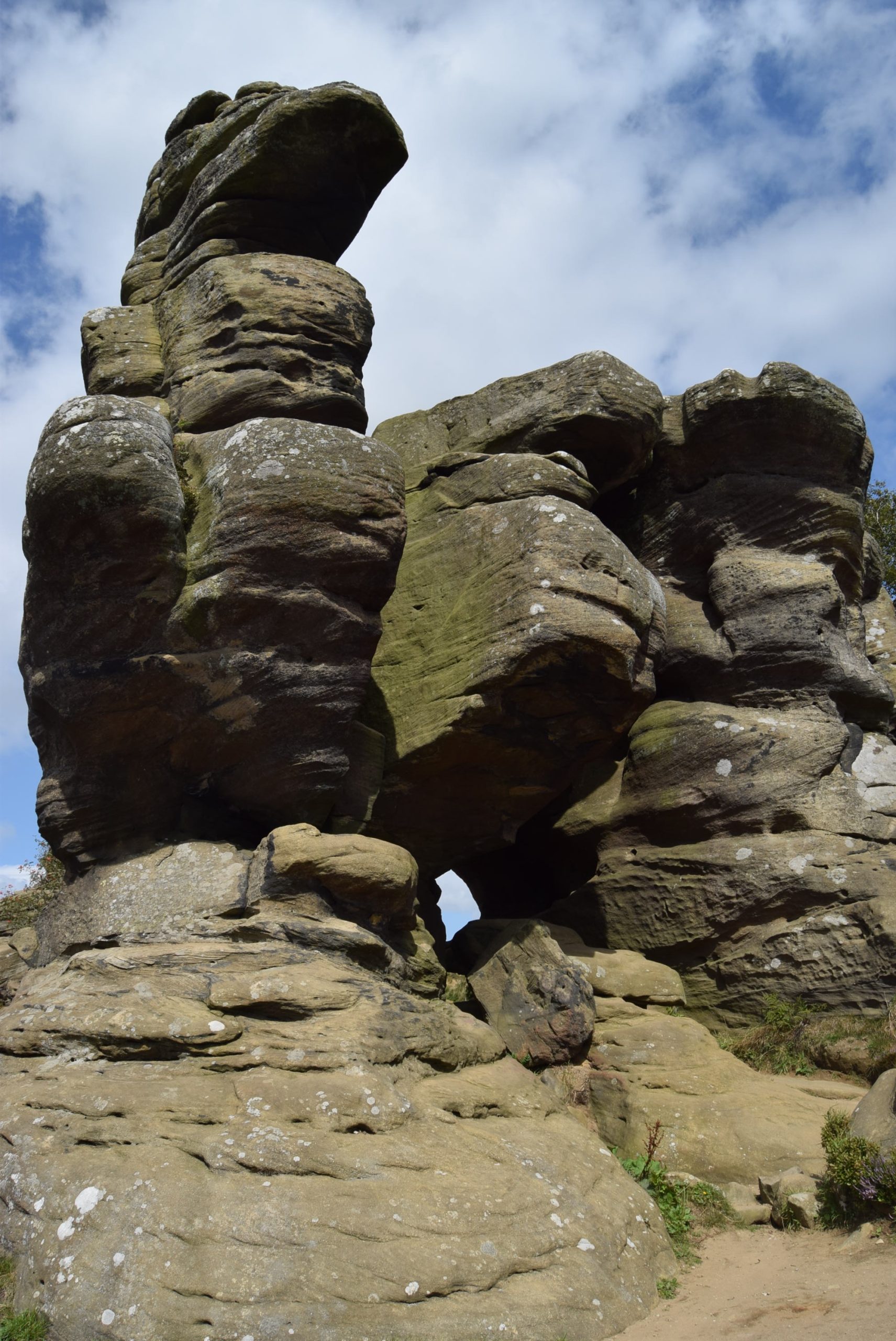These unusual rock formations came about through glaciation and erosion from wind and rain of the millstone grit sandstone that is found in the area. Geologists have dated the rocks at around 320 million years old. A large river originating in Norway, and passing through the mountains of northern Scotland, washed grit and sand into a delta that extended across much of the county of Yorkshire. The grit and sand combined with feldspar and quartz formed the sandstone called millstone grit.

Over time nature has carved the rocks into weird and wonderful shapes, earning them nicknames such as the Sphinx, the Eagle, Idol rock, the Turtle, the Camel and the Dancing Bear. The rock shapes we see today were most likely formed by erosion during the last glacial period, which occurred from around 110,000 to 10,000 years ago. Without plant cover the sand-blasting effect wore down the softer layers of rock, creating unusual shapes such as Idol Rock, on which a giant curved rock balances improbably atop a tiny plinth.

The rocks have a place in popular culture: the children’s television shows Knightmare and Roger and the Rottentrolls were partly filmed in Brimham Rocks, and they were also used as a backdrop in the video for the Bee Gees’ song ‘You Win Again’.

The National Trust operates a visitor centre, shop and kiosk at Brimham Rocks, where visitors can find out more about how these weird and wonderful rocks were formed.





















